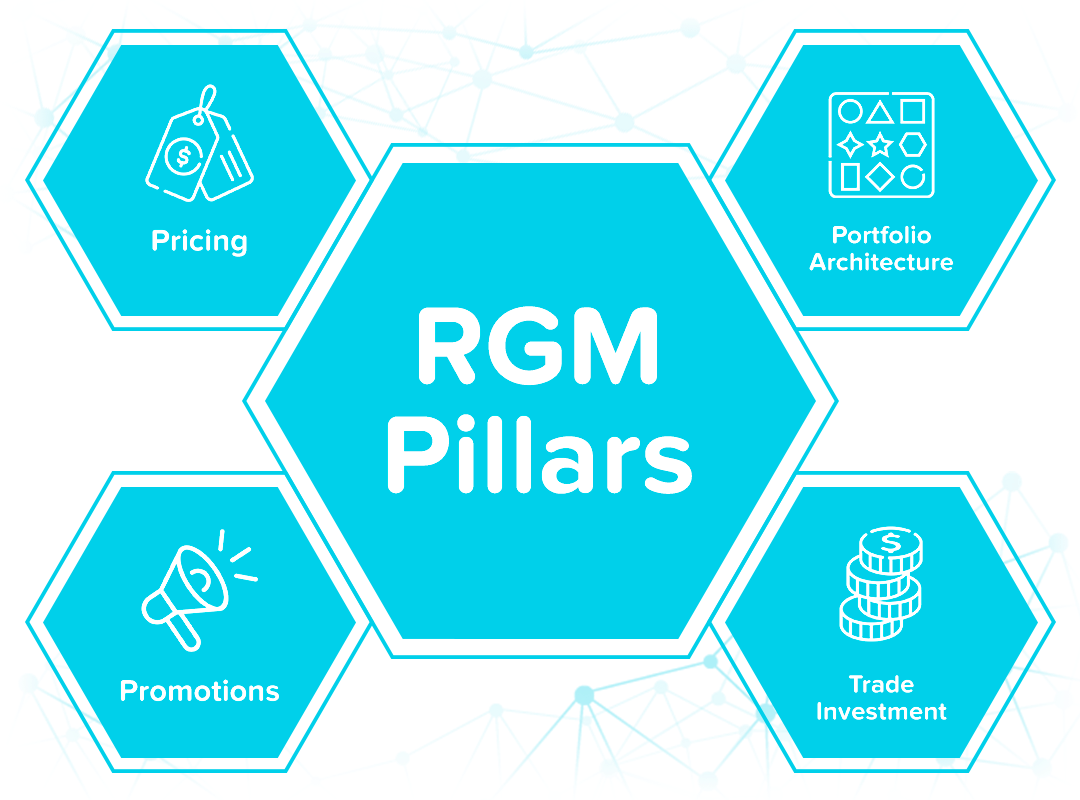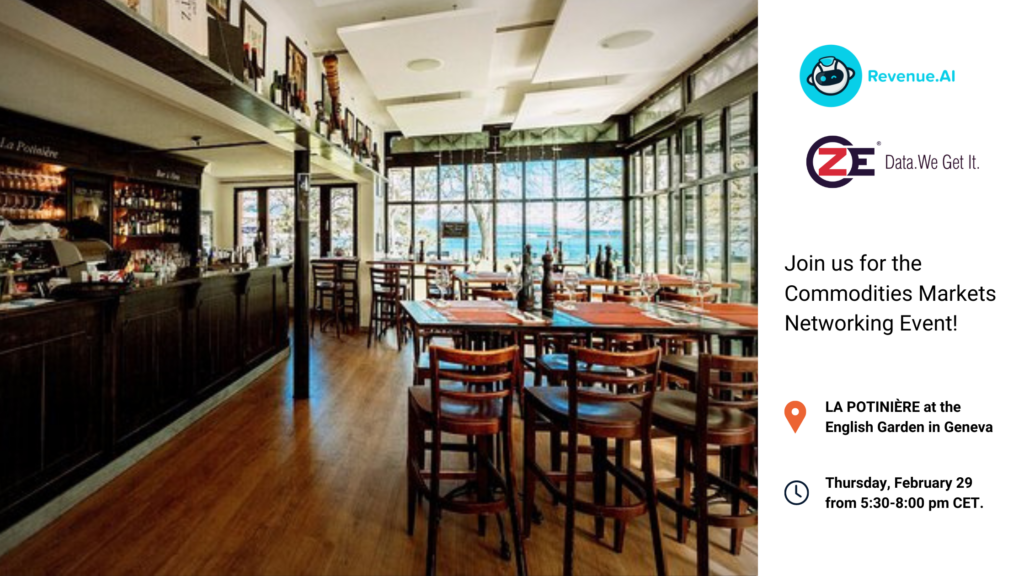RGM: WHAT IS IT AND WHY DO I NEED IT?
Revenue Growth Management (RGM) may seem to be an intimidating concept to come to grips with. You might think it’s something that only major corporations with staff numbering in the hundreds can afford to do. But, as with any complex subject, it’s best to first become familiar with the core aspects before delving more deeply into RGM and the crucial role it plays in developing product strategy for companies, large or small, in the CPG industry.
First things first. We can’t begin to talk about RGM without mentioning the four basic P’s of the marketing mix: product, price, promotion and place. These are concepts that most people will be somewhat familiar with. If we imagine these 4 P’s as passengers in a vehicle, RGM would be car itself. To continue with the analogy, pricing would be our driver, while promotion would be sitting upfront in the passenger seat.
But what is RGM and what’s its connection to the marketing mix? The succinct definition is that it’s the practice of increasing growth using an array of methods such as pricing and promotion, assortment and trade spending. The very succinct definition is that RGM is the practice of utilizing data to identify ways to grow your business.
Today, information is, quite literally, all around us. Using this available data, you can implement new strategies that will increase the revenue making potential of your products. It should be noted, however, that RGM must be based on facts; there’s already enough assumption and opinion driving most companies in the CPG industry. RGM is a science, not an art.
So, let’s take a closer look at RGM, what it is, and why you really can’t do without it when planning strategies for your revenue growth.
THE FOUR MAIN PILLARS OF RGM
Pricing
Pricing strategy has a direct impact on revenue growth. Once you can ascertain costs and set an optimal price for your product, that should drive revenue, right? Well, it’s not quite that simple. If you set your price too high, your product volume will drop. Production costs may then increase because you’re producing smaller quantities. If you peg your prices too low, volume will increase, but that in turn will put pressure on your profits; the cost to produce may not be justified considering the revenues you’re making. Finding the right balance between the two is what optimizing your price points are all about, and that’s how it relates to the concept of revenue growth management.
There are several types of pricing strategies, from value-based or competitive to economy pricing and many in between. In fact, an entire blog post could be dedicated to this subject alone! There’s no easy way to set the base price of your product, as it’s not simply a case of calculating cost price and adding a margin on top of that. Pricing in today’s market is more sophisticated, taking into account concepts such as brand image and value.

It’s worthwhile wrapping your head around the concept of price elasticity, as then you’ll be able to clearly foresee what happens when a price changes not only for your product, but other products in your portfolio, your competitor’s products, or the category as a whole. In this way, you’ll be able to set prices at a point that achieves your business goals in the most efficient way.
But it’s crucial to conduct in-depth research into the market and your competitors as well as dig into your own data to identify the outcome of price variances. Setting prices correctly, depending on the market and the results you’re looking for, will ultimately impact the base demand for your product. This is where promotions play a key part in the life cycle of a product.
Promotion
Promotions (comprised of either digital or physical incentives or offers) have a vital role in driving sales for CPG companies. They help not only maintain, but also increase market share through enticing consumers to select one brand over another. If done well, promotions can also boost brand loyalty. By keeping engagement levels high, promos build relationships with buyers as well as retailers. When an entire category gains value from a creative promotion, it’s a boon to retailers, a situation that may ultimately translate to better shelf locations and visibility in store.
Similarly to pricing, there a many different types and strategies you can use to promote your product. This has only become increasingly pertinent during the Covid-19 crisis, when affordability has made buyers less willing to try new brands. For promotional strategies to be successful, consideration must be given to the following factors: promo calendar (when to promote), budget, optimum discount levels and profitability – an issue that has become particularly problematic.
A Gartner study reported that CPG brands spend up to 25% of their revenues on consumer promotions, making it one of the more significant expenditures on a company’s P&L statement. It’s no wonder that it can be a struggle to understand the ROI of promotional activity when there’s inadequate insight into the long-term effects it has on the spending habits of consumers.
Portfolio Architecture
Also known as portfolio assortment, marketers optimize their assortment to gain an optimal merchandising mix of products. You need a deep understanding of your customers and data to develop not only the product lines, but also the varieties you’d like to have available within those lines.
Trade Investment
Trade spend or promotion is a concept that refers to campaigns not directed at consumers themselves, but at wholesalers or retailers. Traders are offered incentives such as gifts, discounted prices, allowances and free display racks or stands.
Originally designed as a win-win situation for both brands and retailers, trade promotions have become controversial, and the benefit they offer to companies has been questioned due to the murky nature of its effectiveness that is notoriously difficult to measure. Accounting for another large chunk of a brand’s marketing budget, trade investment is something companies are starting to re-evaluate.
PRODUCT STRATEGY FOR RGM
Now that we better understand the basic concepts, it’s becoming clearer why and how even a slight tweak of these components can drastically impact a brand’s product strategy, which in turn influences RGM. Optimizing results, understanding what buyers want, and using data to make insightful predictions about the market are all essential to building cohesive product strategy and connecting it to Revenue Growth Management objectives.
If you look at the intricacies of pricing segments, for example, they range from lower-end and mid-range (mainstream) to high-end based on perceived value differences. It’s possible for brands to upgrade into higher segments, but companies need to also defend their positions from others seeking to do the same. This might entail launching new products at new price points or sub-labels to avoid being squeezed out of a particular segment, but concerns of diluting brand value should also be considered.
Optimizing and adding value in the life cycle of your product is another way to maximize revenue growth. Adding features or attributes to an established brand (such as variances in color, shape, size or flavor) can open up new price points and segments, but it’s important to identify which additions will have a positive impact. This can only happen with the aid of data and market research.
Modifying a product can’t be done without pertinent market insight. The last eighteen months, for example, has seen massive changes in consumer behavior. Buyers are experimenting with alternative food options, spurred in part by a desire to improve their health. A case in point: there’s been a 43% increase in households that purchased meat alternative products in the last two years. Meat manufacturers have been falling over themselves to launch traditional meat-free products, riding the wave of this trend to grow their revenues. Obviously, product strategy and RGM have a complex and inter-connected relationship. It’s no longer viable in today’s market to rely on gut instinct alone, nor is it necessary; with the abundance of data at our fingertips, we should be able to make decisions and plan strategy using all the information available to maximize each brand’s revenue potential






